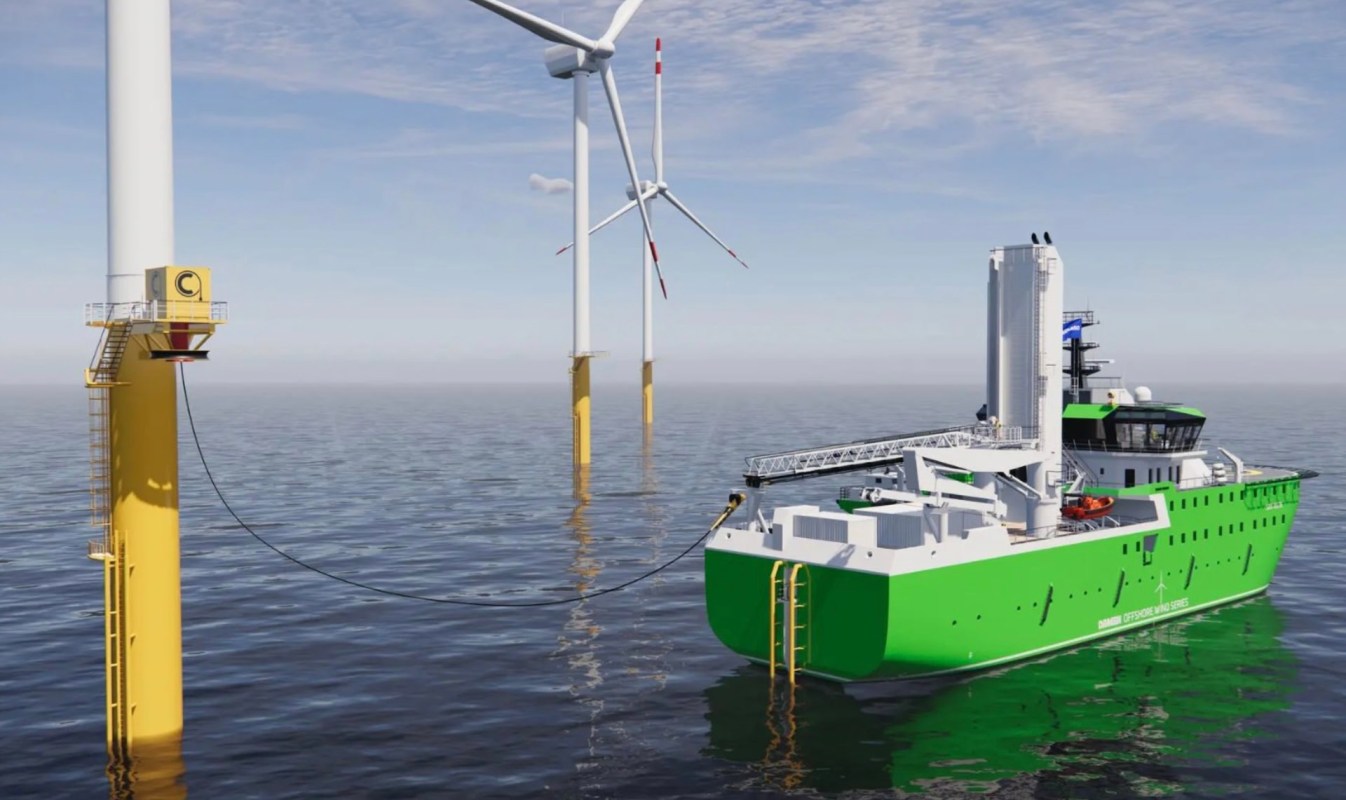In what's said to be a world first, a Dutch shipbuilding company has delivered a service operations vessel that can be charged using offshore wind turbines.
The SOV 7017 E from Damen Shipyards Group is a maintenance ship for turbines located at sea and is equipped with two battery system options. According to Electrek, these comprise a 15-megawatt-hour arrangement when used at nearly full electric power and a 10-megawatt-hour version when running at 75%.
🌊⚡ Damen launches the SOV 7017 E, a fully electric vessel powered by offshore wind turbines! It's 70.1m long with a 15MWhr battery, promoting sustainable offshore operations.
— Goudsmit UK (@GoudsmitUk) December 27, 2023
More details here: https://t.co/On2TRIhBx1#GreenTech #MaritimeInnovation 🚢🍃 pic.twitter.com/gt5ctiz8to
To recharge the ship, pre-existing offshore wind turbines can be used, with a four-megawatt charger developed by MJR Power & Automation in addition to a motion-compensated gangway system to allow for efficient charging straight from the source.
In a matter of hours, a single turbine can fully recharge the ship, which is 70 meters long (about 230 feet) and has 60 cabins to accommodate its crew and up to 40 technicians, according to Electrek.
The vessel does have a diesel backup propulsion system, but it's hoped the groundbreaking ship will be fully independent from dirty fuel.
"Charging from an offshore asset represents optimal practicality, providing a means to reduce costs and emissions and optimize efficiency without placing personnel nor infrastructure in a potentially hazardous situation," managing director at MJR Paul Cairns said in a statement reported by Offshore Engineer.
Meanwhile, Mark Couwenberg, product manager of SOVs for Damen, said the ships are intended to make their offshore energy production "more sustainable."
One commenter on Electrek's report was impressed by the development and called for it to be scaled out for other forms of seagoing transportation.
"Now I want to see cargo ships do the same, visiting offshore wind farms while they go up and down the coasts (at least until we can build floating platforms in the middle of the ocean to charge during ocean crossing trips)," they said.
Another user said "irony cured" when commenting on the new ship charging system, perhaps referring to the fact that the turbines produce clean energy while the vessels required to maintain them still utilize dirty energy sources.
According to the European Commission, global shipping pollution accounted for 2.9% of total dirty-fuel pollution worldwide in 2018, representing 1,076 million tonnes (1,186 million tons) of carbon dioxide pollution.
Developments such as the SOV 7017 will help to reduce the planet-warming gases these vessels produce while making offshore wind an increasingly viable source of clean energy.
Join our free newsletter for weekly updates on the coolest innovations improving our lives and saving our planet.









